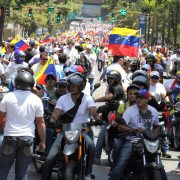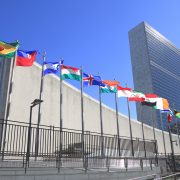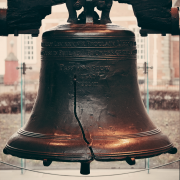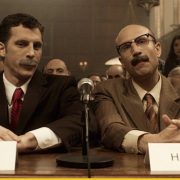“Venezuela is the current poster child of interventionist failure”
When looking at the quality of the media coverage of Venezuela’s crisis and the interpretations of the factors that caused it, the superficiality of most analyses quickly becomes apparent. The explanations offered by many “experts” and commentators largely ignore the country’s history and fail to take into account the pre-existing political and economic dynamics that heavily contributed to, if not predetermined, Venezuela’s current predicament.
To understand these factors and the long road that led to the present crisis, I turned to José Niño, a Venezuelan-American writer, political operative and policy analyst, whose extensive research and deep understanding of the country’s history have armed him with the right tools to separate fact from fiction and political wishful thinking from hard economic realities.
Interview with José Niño:
Claudio Grass (CG): Mainstream international coverage of the crisis in Venezuela earnestly started only about 3-4 years ago. Most analyses blamed declining oil prices and provided very little context as to the status quo before the escalation of the crisis, to the point that the average news consumer couldn’t be blamed for thinking it was all a flash-crash mainly caused by external factors that couldn’t be helped. Do you believe this narrative is accurate?
José Niño (JN): I don’t believe it at all. Contrary to many conventional narratives, Venezuela’s problems go back decades, even before Hugo Chávez and Nicolás Maduro came into the picture. The problem is that people have very short-sighted analyses and interpretations of political events.
Based on my research over the years, I can say that Venezuela’s institutional and cultural decline began in the 1970s with the nationalization of its oil industry and the state’s rapid encroachment into the economy. The last 50 years of Venezuelan economic history have been filled with sub-optimal economic interventions.
However, the recent abuses under Chávez and Maduro were much more profound and accelerationist in nature, hence the country’s recent implosion. Nevertheless, we can’t ignore previous decades of abuses. We have to remember that Venezuela was classified as an economic growth disaster by Charles Jones in his “Introduction to Economic Growth”. It was one of the few countries that actually got poorer from the late 1950s until the late 1990s. In fact, the average per capita GDP in Venezuela was higher in 1958 than in 1998.
 Source: IMF, CSIS
Source: IMF, CSISCG: Many people, lacking the historical understanding of Venezuela’s story, might find it surprising, but there was a time when the country was a formidable economic leader and it wasn’t that long ago. After the end for WWII until the 70s, the levels of prosperity, productivity, growth and overall wealth accumulation were enviable, without the support of skyrocketing oil prices. What drove this economic boom and what does this period say about the conventional understanding of the “resource curse”?
JN: Pre-oil nationalization, Venezuela was quite market-oriented. Taxes were relatively low, spending was in check, and there was a very small managerial state. Obviously, there were no wholesale expropriations of industries as well. Interestingly enough, Venezuela was late to the central banking party. It launched its Central Bank in 1939. These factors also attracted skilled European labor from countries such as Italy, Portugal, and Spain from the 1930s until the 1960s.
From the 1910s until 1970, Venezuela went through a profound economic transformation that nearly put it in First World status. Funny enough, oil prices were not very high during these periods, especially the 1950s, where Venezuela enjoyed tremendous growth.
Once government intervention came into the picture, the country slowly started to go off the rails. When we look back, Venezuela’s decline has more of a “government curse” than a “resource course”. A good deal of oil-rich states have not suffered the same fate as Venezuela and that is no coincidence. Policy matters and collapses are the outcomes of deliberate policies.
CG: What role did the Hugo Chávez years play in setting the stage for today’s economic deterioration? Did his reforms make it inevitable or do you think it could have been avoided?
JN: Chávez represented the accelerationist phase of the Venezuelan collapse story.
Ironically, he campaigned on a relatively centrist, anti-crony capitalism platform in 1998. He denounced the excesses of the post-1958 social democratic order and even described Cuban leader Fidel Castro as a dictator.
However, once in power, things started to change. The failed 2002 coup attempt against his government really radicalized him, especially when rumors emerged that the CIA assisted in this coup. He had the perfect boogieman to mobilize his radical force and so began the next radical phase of the Venezuelan economy.
The nature of the Venezuelan state was fundamentally altered in the 1970s, as the government nationalized the oil industry and turned the country into a petro state. Since then, government intervention in all facets—central banking, controls, subsidies, wage policies, etc.—grew unchecked. The 90s saw half-hearted attempts to make certain reforms from the IMF—marginal spending cuts, new VAT tax, and tariff reductions— but they did not go far enough in terms of oil privatization, spending cuts, or at the least the creation of a sovereign wealth fund. Institutional inertia and a culture that was dependent on the petro state made any type of market reform impossible.
In fact, the president conducting the IMF reforms, Carlos Andrés Pérez, was impeached for corruption by his own party as he was trying to liberalize the economy. The radicals within Pérez’s party where that scared of those lukewarm market reforms.
Also, it did not help that inflation was never tamed during the late 1980s and 1990s. Fun fact, the last time inflation was in the single digits in Venezuela was in 1983. All in all, Chávez continued the previous economic errors, but also introduced authoritarian governance into the equation.
CG: Let’s turn to the state of civil liberties in the country for a moment. Numerous reports clearly show the spike in authoritarian measures, confiscations, violations of property, civil and human rights and the government’s brutal suppression of dissent. Do you believe that this deterioration happened quickly, as the Maduro government suddenly recognized the urgent threats to its authority? Or was it more of a frog-in-boiling-water process, where the gradual limitations to civil liberties and property rights began long before the current crisis?
JN: The Chávez-Maduro era was the most repressive phase of Venezuela’s economic collapse, given the authoritarian nature of the Chavista coalition. There’s a really huge authoritarian streak among Chavistas and they do have a visceral hatred for the upper-middle and upper classes. Chávez took a more boiling frog approach, but the Maduro regime has been more dramatic in certain respects given challenges to his authority and increased international pressure.
Venezuela also has a lot of internal problems with crime and overall lawlessness. So, the government will respond authoritatively at times to demonstrate that it’s still boss.
That being said, the Venezuelan regime is probably one of the least repressive socialist regimes when comparing them to their 20th-century predecessors. I think social media and phone access have kept the government in check and limited their ability to commit repressive acts.
In the upcoming second part of this interview, we turn to the topic of hyperinflation and we also discuss the lessons that Venezuela’s story offers for the increasingly polarized Western democracies going forward.
Claudio Grass, Hünenberg See, Switzerland













